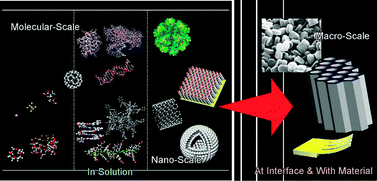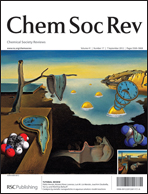Molecular recognition: from solution science to nano/materials technology
Abstract
In the 25 years since its Nobel Prize in chemistry, supramolecular chemistry based on molecular recognition has been paid much attention in scientific and technological fields. Nanotechnology and the related areas seek breakthrough methods of nanofabrication based on rational organization through assembly of constituent molecules. Advanced biochemistry, medical applications, and environmental and energy technologies also depend on the importance of specific interactions between molecules. In those current fields, molecular recognition is now being re-evaluated. In this review, we re-examine current trends in molecular recognition from the viewpoint of the surrounding media, that is (i) the solution phase for development of basic science and molecular design advances; (ii) at nano/materials interfaces for emerging technologies and applications. The first section of this review includes molecular recognition frontiers, receptor design based on combinatorial approaches, organic capsule receptors, metallo-capsule receptors, helical receptors, dendrimer receptors, and the future design of receptor architectures. The following section summarizes topics related to molecular recognition at interfaces including fundamentals of molecular recognition, sensing and detection, structure formation, molecular machines, molecular recognition involving polymers and related materials, and molecular recognition processes in nanostructured materials.


 Please wait while we load your content...
Please wait while we load your content...